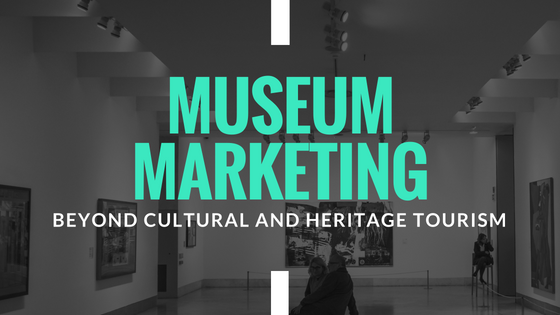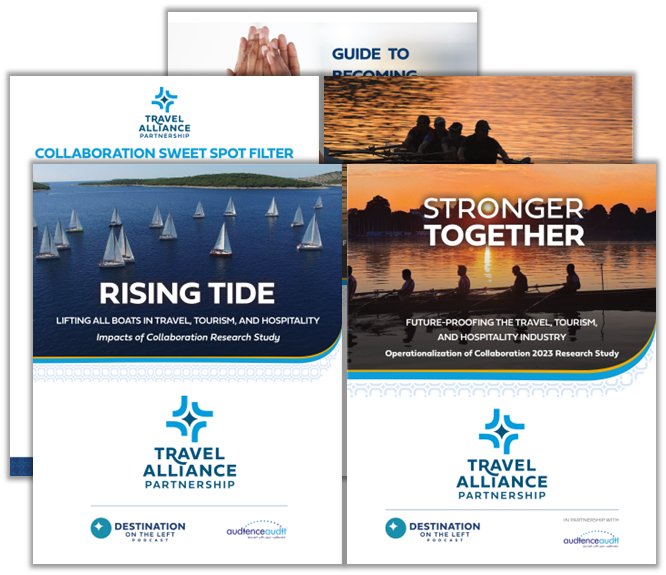Museum Marketing – Beyond Cultural and Heritage Tourism

Museums and cultural institutions are proactively changing to expand their reach and appeal to new audiences, strengthening their role beyond cultural and heritage tourism. I recently attended the 2018 Museum Association of New York annual conference to learn what is happening in the industry. The theme of the conference was “Visioning Change,” and I was intrigued to find out what these institutions have in store for the future.
I interviewed attendees from all over New York State representing all types of museums and cultural institutions for my podcast Destination on the Left. The conversations were enlightening and inspiring and provided new perspective on this important segment of the tourism industry. Many themes stood out during these conversations related to museum marketing. These included how museums and cultural institutions are working to build community, reaching audiences beyond their local markets and creating new programming and events that enhance the visitor experience.
Community Partnerships
Museums are using community partnerships as a key component of their marketing strategy. Eliza Kozlowski, Director of Marketing and Engagement at the George Eastman Museum described their ability to reach the Canadian market through a partnership with Visit Rochester, the local destination marketing organization. She explains:
“We are all about partnerships and recognizing that we have destination marketing organizations in the region that are instrumental in helping us connect to people who are coming into the region or making decisions about what to do in the region.”
Partnering with those organizations helps the George Eastman Museum’s marketing investments go further through co-op programs. They stay connected on various new programs that can potentially help the museum draw more visitors.
Starlyn D’Angelo, Executive Director with The Shaker Heritage Society described a collaboration with several other museums in the Albany, NY area called The Partnership for Albany’s Stories. She explains: “It’s really a confederation of eleven cultural entities that are focused on Albany and Albany’s story. We do whatever we can to cross-promote, we share volunteers, we do everything that we can to support each other. The idea is that we all rise together, by helping support our partners and they succeed, then we will be more likely to succeed as well, and Albany is more likely to become a destination for tourists.”
“The idea is that we all rise together, by helping support our partners and they succeed, then we will be more likely to succeed as well”
Reaching New Audiences
Having a good product will help draw visitors from outside the local market. Make sure that you are serving your local market and appealing to a broad audience are key according to Cordell Reaves, Historic Preservation Programs Analyst, New York State Office of Parks, Recreation and Historic Preservation. He describes his view on being prepared before reaching out to your local tourism office or I Love NY.
“It is much easier to get a strong product to market. We reach out to our tourism promotion agents in every region asking to be on FAM tours, for travel writers and tour operators. We also try to make sure that we’re getting good media coverage. Make sure that people know what we’re doing. “
At the Metropolitan Museum of Art in NYC, visitors to the museum have increased by 31% overall. 40% of those visitors are first-timers and the average age of the visitor has decreased to about 41 years old. Tom Schuler, Chief Government Relations Officer, Metropolitan Museum of Art explains why they are seeing such strong trends: “We think that’s part of the younger age group, and seeing more New Yorkers, particularly from the Outer Boroughs, which we really made a push to attract. We are trying to get the folks from Queens, Brooklyn and the Bronx to the Met. We want them to see the Met as their living room. We’re open until nine o’clock on Friday and Saturday nights, and we’re calling those extended hours “New York City Night.” It’s Friday night at the Met, and we’re trying to attract New Yorkers to come and spend some time here and just enjoy the museum.”
“We want them to see the Met as their living room”
At Sonnenberg Gardens and Mansion Historic Park in Canandaigua, NY the museum attracts about 20,000 visitors each year. That number nearly doubles when you add in visitors for special events both public and private. David Hutchings, Executive Director explains: “Whenever there’s a reason to be invited to the gardens, and to the mansion, and to the home, we see our attendance just skyrockets. And we really have a wonderful tagline theme that we want people to celebrate their lives at Sonnenberg because we’re really based on the love story between Frederick and Mary Clark Thompson. “
Enhancing the Visitor Experience
At the Corning Museum of Glass, successful public programming is foundational to getting visitors to experience the museum. Rob Cassetti, Senior Director of Creative Strategy and Audience Engagement calls these “door openers,”. Door-openers work by using a special event to compel someone to visit for the first-time and then translating that into regular visitation. He shares their approach: “A lot of our programming, we like to think of creating unexpected experiences. People in their minds kind of typecast what a museum experience is going to be. An older perception of the museum was hands-off. It wasn’t kid friendly. And so, you come to a program that’s clearly hands-on and kid-friendly, and you suddenly are changing perceptions about this institution. And my own philosophy is, never pass up an opportunity to reshape peoples’ perceptions in a positive way about our institution.”
“My own philosophy is, never pass up an opportunity to reshape peoples’ perceptions in a positive way about our institution.”
The Memorial Art Gallery of the University of Rochester is creating new programs to help dispel the myth that museums aren’t a place for everyone. Their new tagline is “One MAG fits All”. Rachel Unger, Director of Marketing and Engagement explains: “We have a program called detours, which takes our permanent collection and traveling collection and puts a fun spin on them. We just had a Harry Potter detour showcasing how something from Harry Potter can be interpreted in the collection and how everything goes together.”
The Rochester Museum and Science Center is adding new programming to appeal to broader audiences. Digital Engagement and Communication Specialist, Hannah Barry explains what they’re doing at the Cummings Nature Center.
“Our nature center audiences have really been growing. We’ve been offering many different public programs and trying to integrate it into what we’ve been doing at the museum and planetarium so that we’re a unified organization. One exciting new event that’s becoming really popular is orchestra in the pines. Every June, we have the Finger Lakes Symphony Orchestra go out into the woods and play symphony. And we have local wine and food so people can enjoy the nature center in a new way, while collaborating with another organization.”
“We’ve been offering many different public programs and trying to integrate it into what we’ve been doing at the museum and planetarium so that we’re a unified organization.”
To learn more about museum marketing, listen to the Destination on the Left Museum Series podcast:
Knowing your Audience- Episode 1
Community Partnerships- Episode 2
Creative Programming & Special Events- Episode 3
Author
Related Posts
How Curated Experiences Can Help Your Tourism Marketing
In years past, travelers may have been satisfied to see sites like the Eiffel Tower or Colosseum; now they want to get behind the scenes,...
Marketing for Group Travel: Building Solid Relationships with Tour Operators
Group travel is a significant segment of the tourism market, and if you want to see those buses pulling up to the curb and filling…
